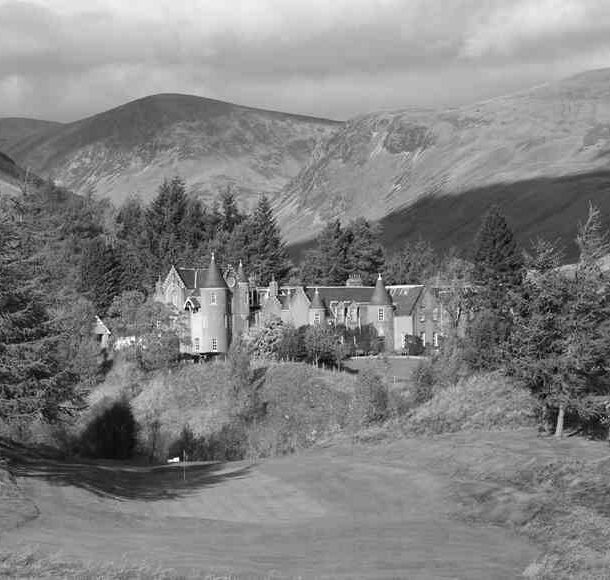

Close

Patrick Whitelaw and his wife, Margaret Hamilton, built Fenton Tower to defend themselves from the anarchic violence of the Borders. For nearly four centuries, men called “reivers” dominated the swathe of the ungovernable countryside on either side of the Scottish border. Ravaged by constant wars between Scotland and England, many lost their livelihoods and turned on each other. They became murderers and plunderers who robbed, killed, burned, and pillaged. They gave the word “blackmail” to the English language. Their blood feuds were so entrenched that they excused each fresh raid as a reprisal.
Whitelaw built Fenton Tower on a rocky hillside with expansive views that would expose any approaching reivers. A tower had stood on the outcrop of bedrock since the 12th century, but Whitelaw built a new tower house. He built the walls 1.5 meters to protect himself and his family.
But in the chaos of the Borders no man could count on holding his home for long. Whitelaw was loyal to Mary, Queen of Scots, even though many Protestant Scottish noblemen resented the young Catholic queen raised in a French court. Whitelaw’s wife, Margaret, was a Hamilton, and many in her clan were fiercely loyal to Mary. In 1568, Whitelaw stood by Mary at the Battle of Langside. Mary’s enemies had kidnapped her infant son, James, and claimed to fight in his name. She suffered a colossal defeat and had to flee her own country to the cold comfort of her cousin Elizabeth I. Eventually, Elizabeth would behead the beautiful Mary. Whitelaw suffered for his loyalty. He was stripped of his rights to Fenton Tower, and it was awarded to John Carmichael, a Scottish lord loyal to James. Carmichael etched his name and his crest into the stone of Fenton Tower.
Carmichael was Warden of the Marches. Neither the English nor Scottish crowns could govern the Scottish Borders. Instead, it was up to wardens to keep the peace, prevent crime, recover stolen goods, quell international incidents, and try criminals. They supplied what little order there was in a lawless land. Many wardens were wont to bend the rules to pad their meager annuities — and compensate themselves for the risks they took on with their office. But Sir John Carmichael was a conscientious, honest man. He stood by the letter of the law even when it made enemies of his neighbors. He was a stolid soldier who knew how to captain an army even if his only troops were mercenaries. He worked closely with King James and his regent to force order on the Borders. He won the respect of the English and an annuity from the English crown. Perhaps his greatest fault was that he was a better Englishman than Scotsman, King James wrote after he died.
But the Scottish lords and reivers resented their all-too-honest warden. They lived by robbery and murder, and he got in the way of their crimes. By all accounts, it was a miracle that Carmichael ever reached the age of 50 for he had so many, and so violent, enemies. The Armstrongs, a Scottish clan with a long tradition of reiving, wanted to do away with the meddlesome warden. First, they drummed up an excuse: They claimed that he had grossly insulted their relative because one of his men smeared a broken egg into his scabbard and his sword became stuck. Then, a set of young, hot-blooded Armstrongs plotted his demise at a football game. (English and Scottish monarchs alike denounced the sport, a predecessor to both American football and soccer, as a seeding ground for violence and drunken raids). The Armstrongs ambushed Carmichael on the open highway. He fled, but they shot him in the back.
“Now the thieves will ride,” warned an English official. “This is the third warden they have killed and taken prisoner in Scotland.”
King James made the murderers pay with their lives. Some, he hanged within a year. But he didn’t give up on the search. He hanged two more of the band in 1605. Carmichael did not live to see the Borders tamed, but after King James ascended to the English throne he presided over a unified Scotland and England. He had the authority to force the reivers under his yoke. Fenton Tower no longer looked out at marauding bands of thieves, but at a rolling landscape recovering from centuries of violence.